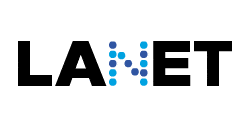Expertos en Soporte Técnico y Outsourcing de TI en CDMX
Descubre cómo Lanet transforma el soporte técnico de cómputo, ofreciendo soluciones personalizadas y eficientes para empresas como la tuya. Con más de 28 años de experiencia, aseguramos que tu infraestructura tecnológica y tus operaciones diarias se mantengan sin interrupciones
-
Experiencia Comprobada:
Confiando en más de dos décadas de experiencia, nuestros especialistas en TI proporcionan soporte integral que mantiene tus sistemas en óptimo estado.
-
Soluciones Personalizadas:
Entendemos que cada empresa es única. Ofrecemos soluciones de TI diseñadas específicamente para atender las necesidades y desafíos individuales de tu negocio.
-
Enfoque Integral:
Desde soporte técnico rápido y efectivo hasta la implementación de sistemas avanzados de TI, cubrimos todos los aspectos para garantizar un rendimiento sin fallos.
-
Compromiso con la Innovación:
Nos mantenemos al día con las últimas tecnologías y tendencias para ofrecerte las soluciones más avanzadas y eficaces disponibles.
-
Soporte Continuo:
Ofrecemos asistencia continua con un equipo de respuesta rápida para resolver cualquier incidencia, asegurando la menor interrupción posible en tus operaciones diarias.
Maximiza la eficiencia de tu negocio con el soporte técnico y outsourcing de TI líder en la industria. Explora nuestros servicios y descubre cómo podemos ayudarte a crecer y proteger tu empresa.
¿COMO LO HACEMOS?

PLANEACIÓN

ADMINISTRACIÓN

SOPORTE TÉCNICO

CERTIFICACIÓN DE NUEVAS TECNOLOGÍAS
¿A quién va dirigido?
A empresas y negocios que necesitan que Lanet se encargue de todo el Help Desk y soporte técnico de sus equipos de computo, redes y sistemas informáticos, para recepción la atención remota inicial, así como el escalamiento a Implants en sitio mediante un sistema de tickets ordenado y manejo de proveedores terceros.
A toda empresa que pueden o no tener departamento de soporte de TI propio y que por su operación de forma continua necesiten soporte técnico para atender tanto eventualidades como requerimientos sobre la marcha a través de nuestra mesa de ayuda, soporte remoto e ingenieros implants en sitio, independientemente de su tamaño. Tambien cualquier empresa que necesite de un outsourcing TI especializado en implementar infraestructura redundante y escalable.
Soporte Técnico en Cómputo para Empresas
El soporte técnico para equipo de cómputo empresarial que ofrece Lanet está enfocado en generar valor dentro de cualquier empresa o entidad de gobierno, a través de la óptima e inmediata resolución de cualquier incidencia de hardware o software.
- Calidad garantizada mediante SLAs y KPIs transparentes.
- Metodología de referencia ITIL & CobIT.
- Reporteo mensual y sesiones de coaching para mejora continua.
- Ingenieros calificados con CompTIA.
- Soporte remoto y presencial para aquellas tareas que requieran asistencia física.
¿Tu empresa no requiere personal de sistemas de tiempo completo? Podemos ayudarte con todo el Soporte de Cómputo y del día a día que necesitas como por ejemplo:
- Soporte técnico de cómputo.
- Soporte a Suite de Office.
- Mantenimiento y monitoreo de software e infraestructura
- Actualización de equipos e instalación de parches de seguridad.
- Limpieza de archivos temporales.
- Desfragmentación de discos.
- Depuración de procesos de sistema.
- Definición de esquemas de respaldo.
- Lineamientos y procesos TI.
- Lineamientos de antivirus.
- Redundancia de infraestructura.
- Outsourcing de TI.
- Mucho más ...


Nuestras pólizas de soporte técnico a computadoras comprende checar los equipos de computo, resolución de problemas con el sistema operativo, optimización y revisión del mismo, limpieza de virus, malware u otros, control de usuarios y mantenimiento correctivo al hardware, ya sea de manera presencial remota o con ingenieros implant, tenemos mas de 25 años en el ramo y contamos con la experiencia necesaria para arreglar de manera rápida y en el sitio los problemas del equipo de computo en su empresa.

Contamos con gran experiencia en soluciones y puesta en marcha de servidores en Escritorio Remoto y Active Directory.
Analizamos los programas y recursos que necesita la empresa para la centralización de servicios como respaldos, bloqueos de accesos, control de usuarios y demás, lo llevamos de manera efectiva mediante la implementación de políticas y lineamientos de los activos y centralización y monitoreo de servicios.

La implementación de TI o tecnologías de información comprende el análisis de las necesidades de su empresa para el manejo de la información de forma veraz y eficaz. La implementación de TI va desde los programas e infraestructura necesarios para el manejo de tu información, contamos con programas especializados para casi cualquier tipo de empresa.

El filtrado de contenidos permite que sus usuarios usen los recursos de su internet para el trabajo, limitamos accesos a paginas no debidas como de redes sociales, televisión, de phishing y de virus entre otras categorías, permitiendo minimizar los riesgos de virus o fallas de seguridad en tu red.
